Abstract
An exchange of Na+ for H+ has been proposed to explain why jejunal Na+ absorption is influenced by luminal concentrations of H+ and HCO3-. We studied the influence of luminal Na+ concentration on net HCO3- absorption by perfusing rat jejunum in vivo. When Na+ was omitted from the perfusion fluid, HCO3- absorption diminished by a fixed amount over a range of initial HCO3- concentrations of 15 to 80 mM. This change was not caused by alterations in transmural PD or direction of water movement. Because the rate of HCO3- absorption decreased as the luminal HCO3- concentration lessened, Na+-dependent HCO3- absorption accounted for an increasing percent of total absorption as the luminal concentration of HCO3- diminished.
The effect of Na+ on HCO3- absorption is mediated, at least in part, by H+ secretion, because luminal CO2 production (manifested by luminal PCO2) dimished as HCO3- absorption decreased. The changes in PCO2 are caused by reaction of H+ with HCO3- in the luminal fluid because luminal PCO2 is augmented by the presence of HCO3- and is diminished by addition of phosphate or Tris buffer.
Whether all H+ secretion requires luminal Na+ cannot be determined with these experimental techniques because mucosal permeability to Na+ and the unstirred layer make it impossible to eliminate Na+ ions from the luminal cell surface. The nature of the mechanism for HCO3- transport that is not sodium dependent remains to be determined.
Full text
PDF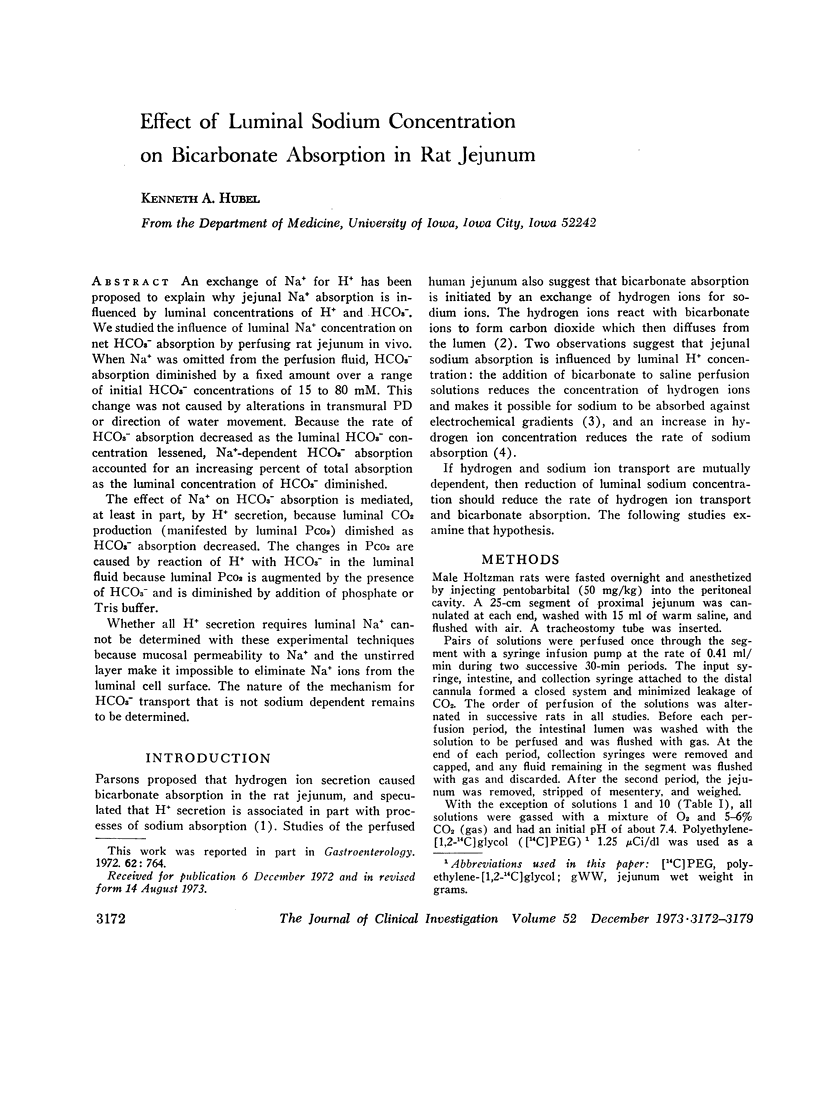
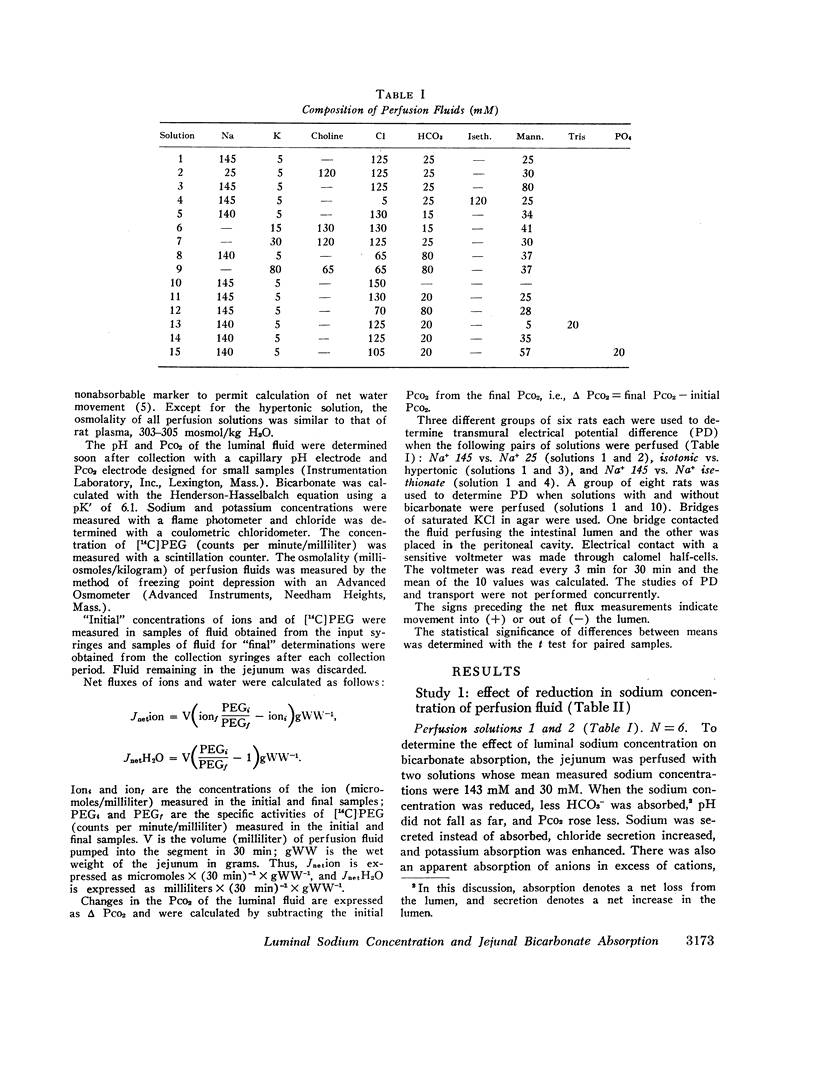
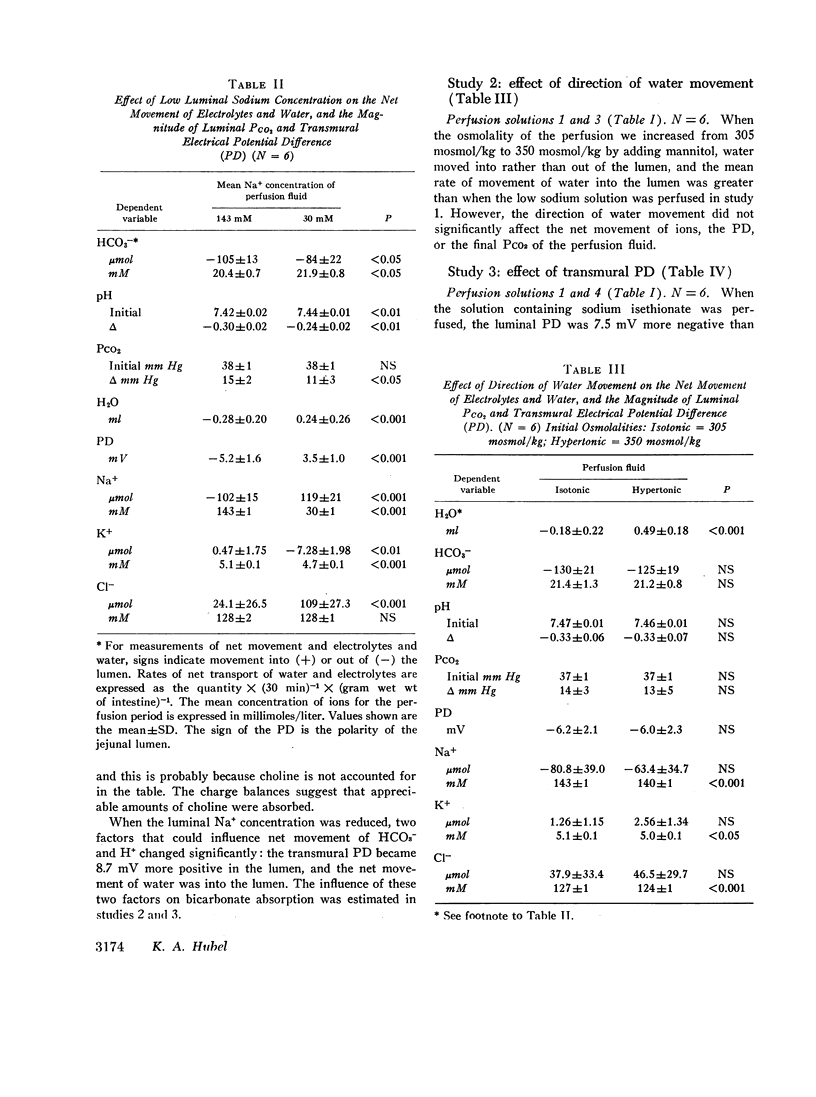
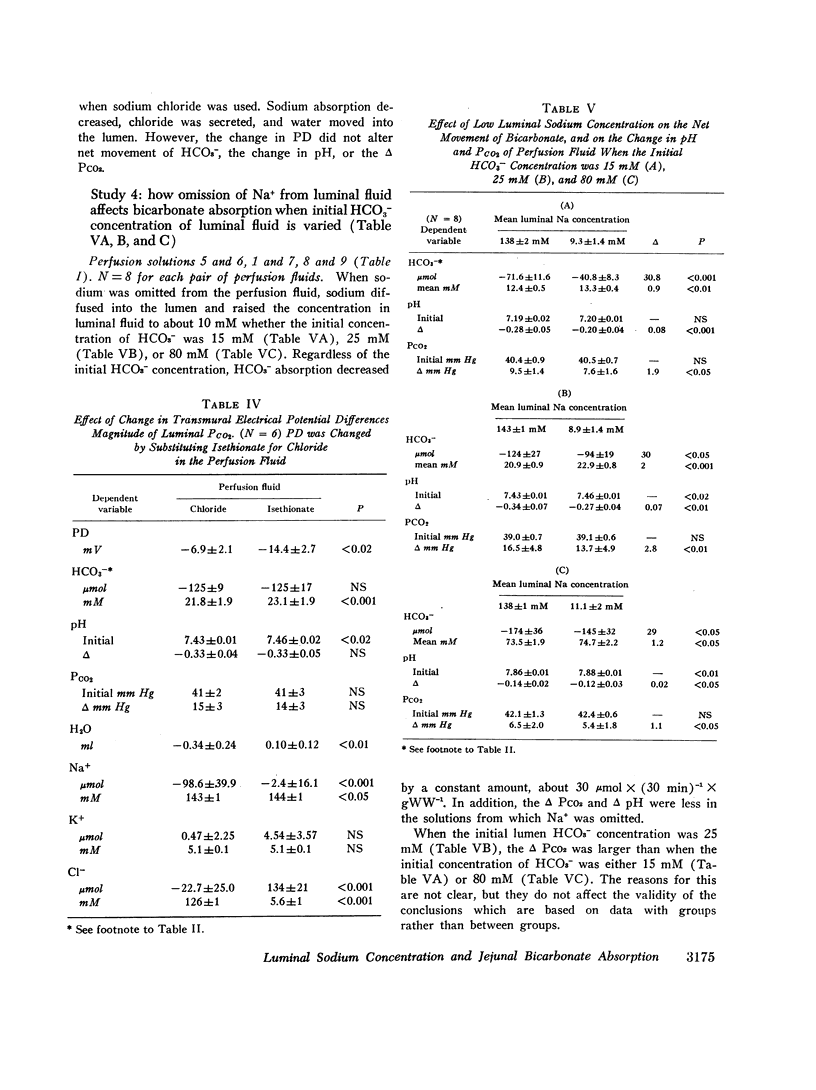
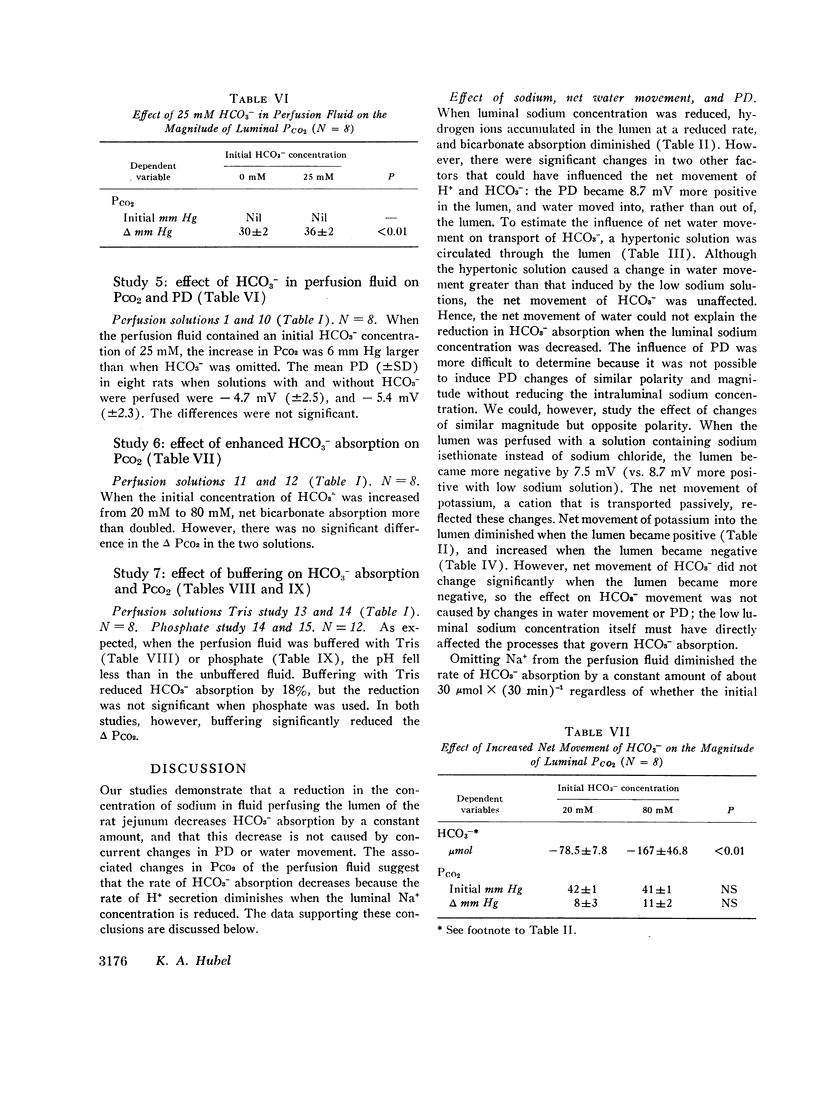

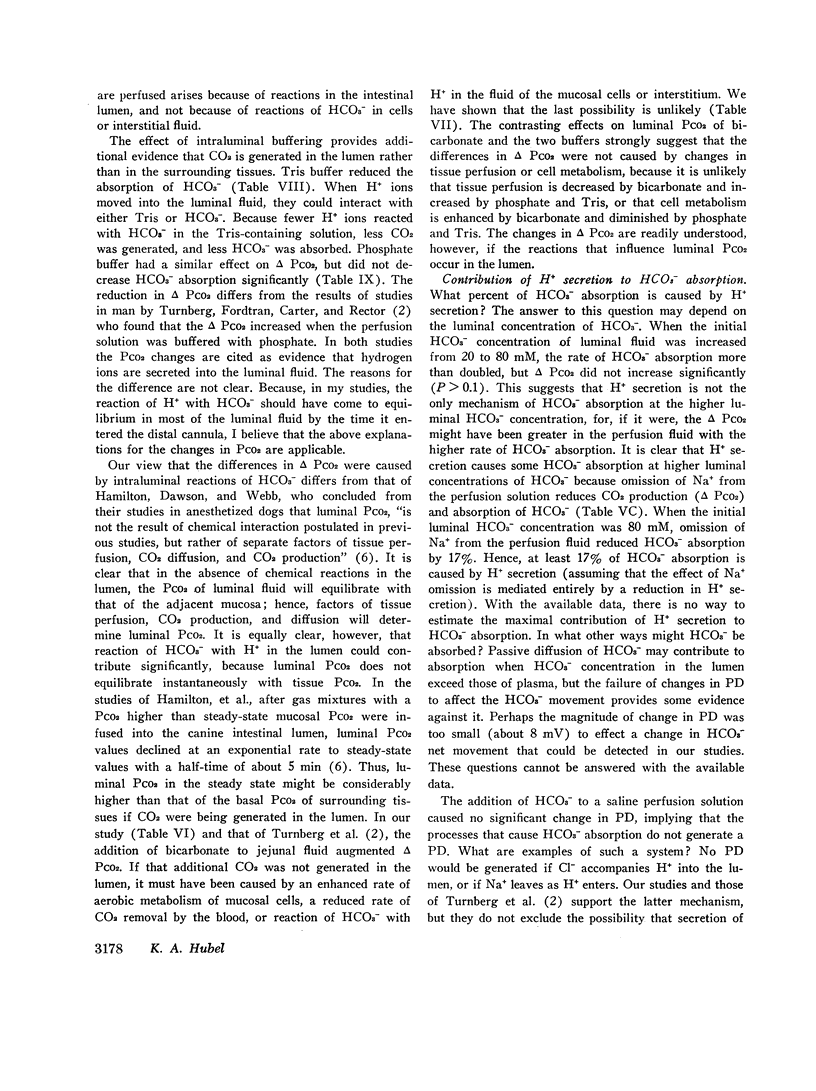
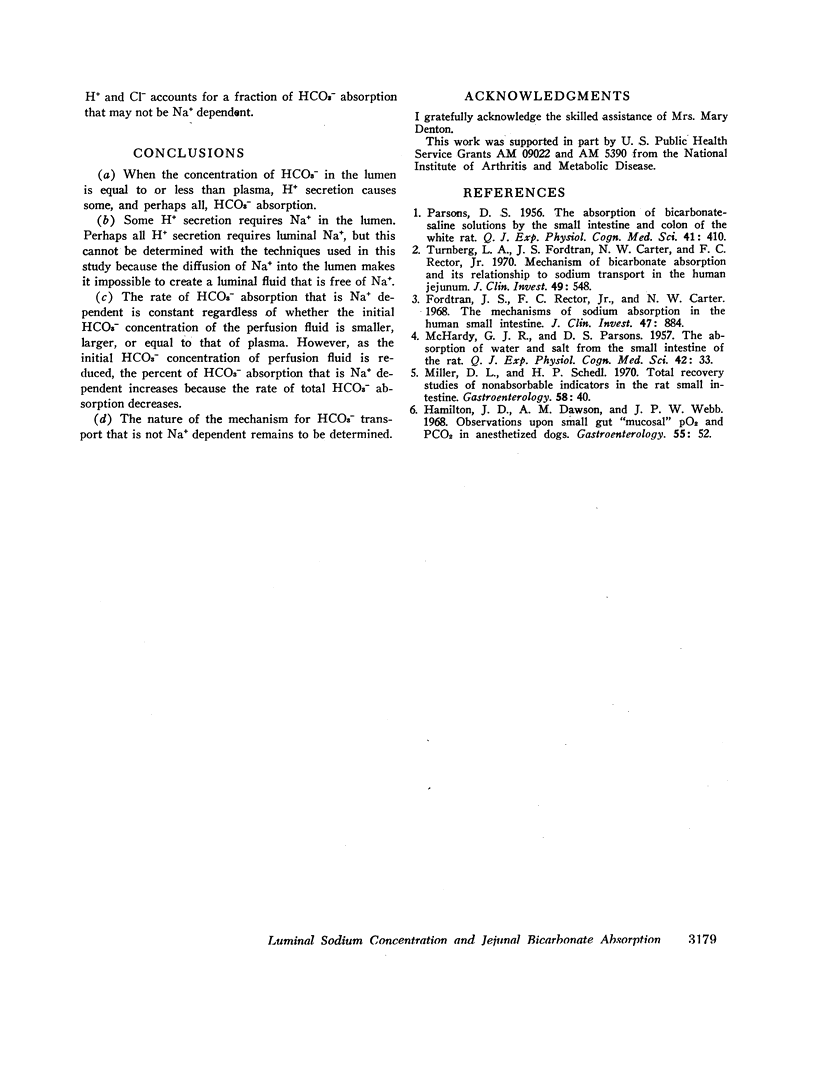
Selected References
These references are in PubMed. This may not be the complete list of references from this article.
- Fordtran J. S., Rector F. C., Jr, Carter N. W. The mechanisms of sodium absorption in the human small intestine. J Clin Invest. 1968 Apr;47(4):884–900. doi: 10.1172/JCI105781. [DOI] [PMC free article] [PubMed] [Google Scholar]
- Hamilton J. D., Dawson A. M., Webb P. W. Observations upon small gut "mucosal" pO2 and pCO2 in anesthetized dogs. Gastroenterology. 1968 Jul;55(1):52–60. [PubMed] [Google Scholar]
- McHARDY G. J., PARSONS D. S. The absorption of water and salt from the small intestine of the rat. Q J Exp Physiol Cogn Med Sci. 1957 Jan;42(1):33–48. doi: 10.1113/expphysiol.1957.sp001241. [DOI] [PubMed] [Google Scholar]
- Miller D. L., Schedl H. P. Total recovery studies of nonabsorbable indicators in the rat small intestine. Gastroenterology. 1970 Jan;58(1):40–46. [PubMed] [Google Scholar]
- Turnberg L. A., Fordtran J. S., Carter N. W., Rector F. C., Jr Mechanism of bicarbonate absorption and its relationship to sodium transport in the human jejunum. J Clin Invest. 1970 Mar;49(3):548–556. doi: 10.1172/JCI106265. [DOI] [PMC free article] [PubMed] [Google Scholar]


